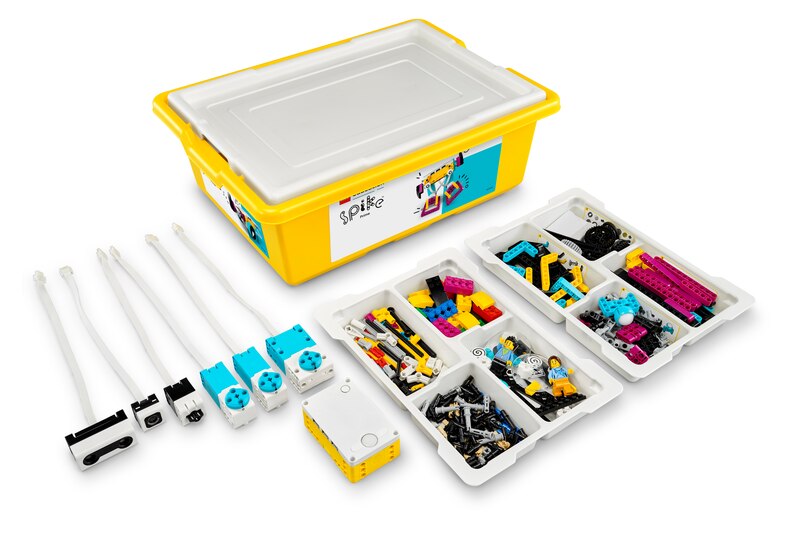Lego is one of the most universally loved and culturally incorporated brands not only in the Middle East but also in the world. It was founded in 1932 and has intertwined itself through our lives in multiple ways since then, breaking children out of the playroom confinement with its user-generated content and impressive build quality. Lego’s primary users are children, but as time has progressed, Lego has also had to reinvent itself and come up with innovative solutions to keep up with the technology that has infused our lives. To remain relevant Lego has had to work in tandem with a blended learning environment that uses STEAM solutions and coding to help students learn programming and much more. These solutions and proactively designed tasks and projects enhance critical thinking and inspire the learners to find sustainable solutions.
It helps the students who are remotely learning in the UAE, engage in group discussions and hands-on demonstrations. Lego believes learning can happen anywhere and so they constantly endeavor to introduce ground-breaking concepts to facilitate the same. With the LEGO® Education SPIKE™ Prime Set, every student, whether online or offline can benefit from the potential of Scratch (a coding language) and build confidence in their coding skills. Most of the LEGO® Education SPIKE™ Prime’s lessons are curriculum aligned and include building with the blocks and coding alongside. These lessons are 45-minute sessions to create limitless designs while engaging in healthy feedback and exchange of ideas.
A popular LEGO® Education SPIKE™ Prime lesson worth delving into is the Rain or Shine Spike Set. This is a lesson plan to create a method of displaying a weather forecast using qualitative cloud data. This is beginner friendly and is suitable for children between grades 5 to 8 for all GCC schools. The Rain or Shine lesson plan involves the 5-step approach that is synonymous with LEGO® Education. The first step is engaging the students in a discussion relating to the topic. The second is to explore all available data and have the students build a weathercaster. Students must remember while they are building, that for the lesson to work, the motors have to be positioned correctly at the zero position when the arms are down. They must enter the city of Dubai (or whichever city they are in) for the program to work. Students must create a 5-hour program that works with the weathercaster. It needs to display whether it is raining or not, to what extent it is cloudy or is it snowing or foggy, etc. The next step is to explain to the students for a short while how the cloud data could be used to control an output. An interactive session on the varied outcomes of setting the weather block to different locations can be had. The fifth step is elaborating on the collected data and its tabulation. Students can record the forecast for at least 2 locations for the next 5 hours and compare their forecasted data to the actual available data from websites and city weather apps. Lastly, evaluating every student’s performance and input will provide an immediate assessment of their progress and encourage them to do better. To simplify the session, you may ask the students to explore cities that have only sunshine.
Alternatively, you can suggest making a good, random holiday destination list listed by weather. They can even add more bricks to personalise their models during their builds. For your convenience, you can also use the assessment rubric that has been provided for teacher support or establish a scale that is suitable for your assessment levels. Teachers must evaluate submitted work based on the accurate description of the cloud data content and the usage of the data in their programs to generate an accurate weather forecast. Self-assessment or peer assessment tips are also available on the Lego Education website as are extensions for languages, art and maths.
Scientists never stop asking questions and learning never stops. Even today, we have advanced concepts simplified and made into a concise and easy form for children of all ages to learn and understand. A brand that we all know and love Lego, has come up with an educational set that allows children to explore physical science in action. It engages elementary and middle school students in the GCC areas, in STEAM learning with hands-on learning in forces, motion and interactions. These are standards-aligned lessons that enhance students’ knowledge, skills, and confidence and help grow their love of learning. Through these lessons they take part in collaborative discussions when presenting and analyzing their solutions, thereby strengthening their communication skills. The LEGO® Education BricQ Motion Essential includes an experiment that is very commonly used in schools in the UAE. It is called the Gravity Car Derby. In this hands-on learning experiment, students are first required to build a Lego car without wheels and note down the effects of it being sent down a ramp. Here they learn about force, friction and gravity. They note down their observations to compare them to the next part of the experiment where they build a Lego car with wheels and roll it down the ramp in the same way. Now they also learn about weight, speed and distance. After these two experiments where the children have immense fun building with the LEGO® Education BricQ Motion Essential set and analysing the effects of the forces and motions. They learn about the concepts of gravity, inertia, safety etc. Just like these LEGO® Education BricQ Motion Essential has many sets that engage children in educative and enjoyable learning experiences.

